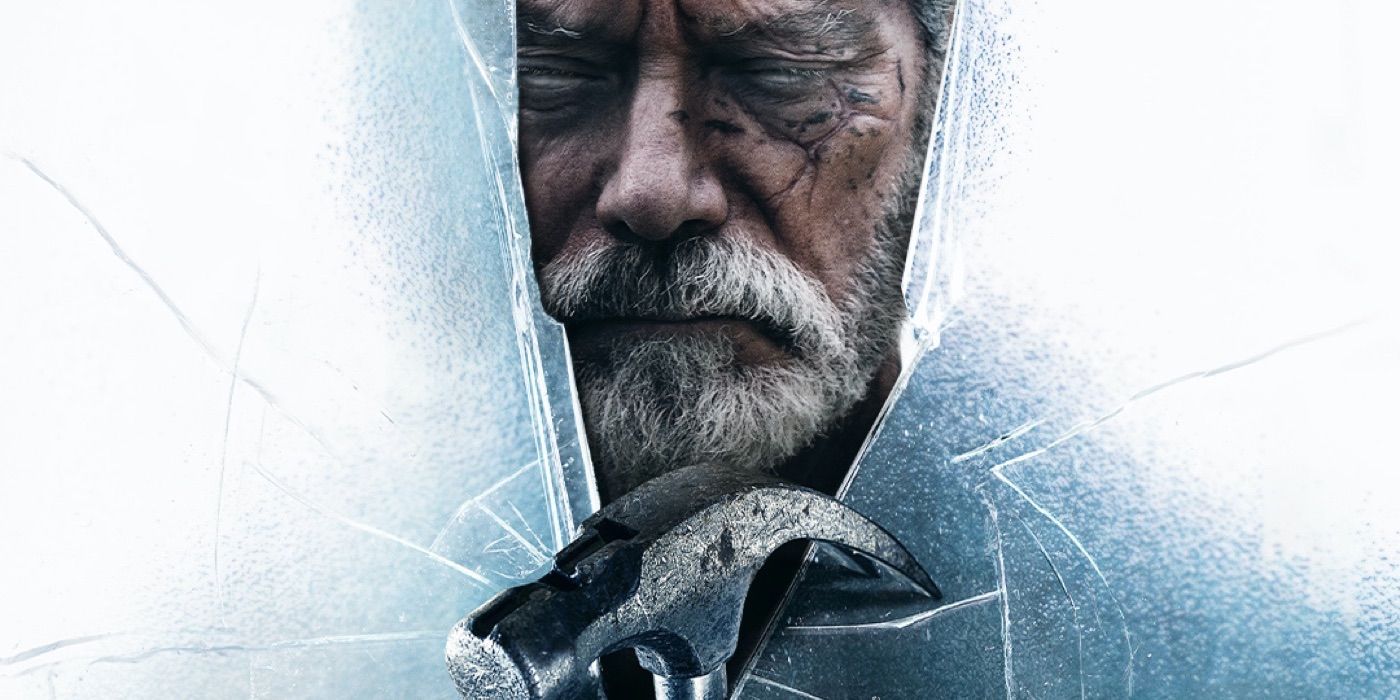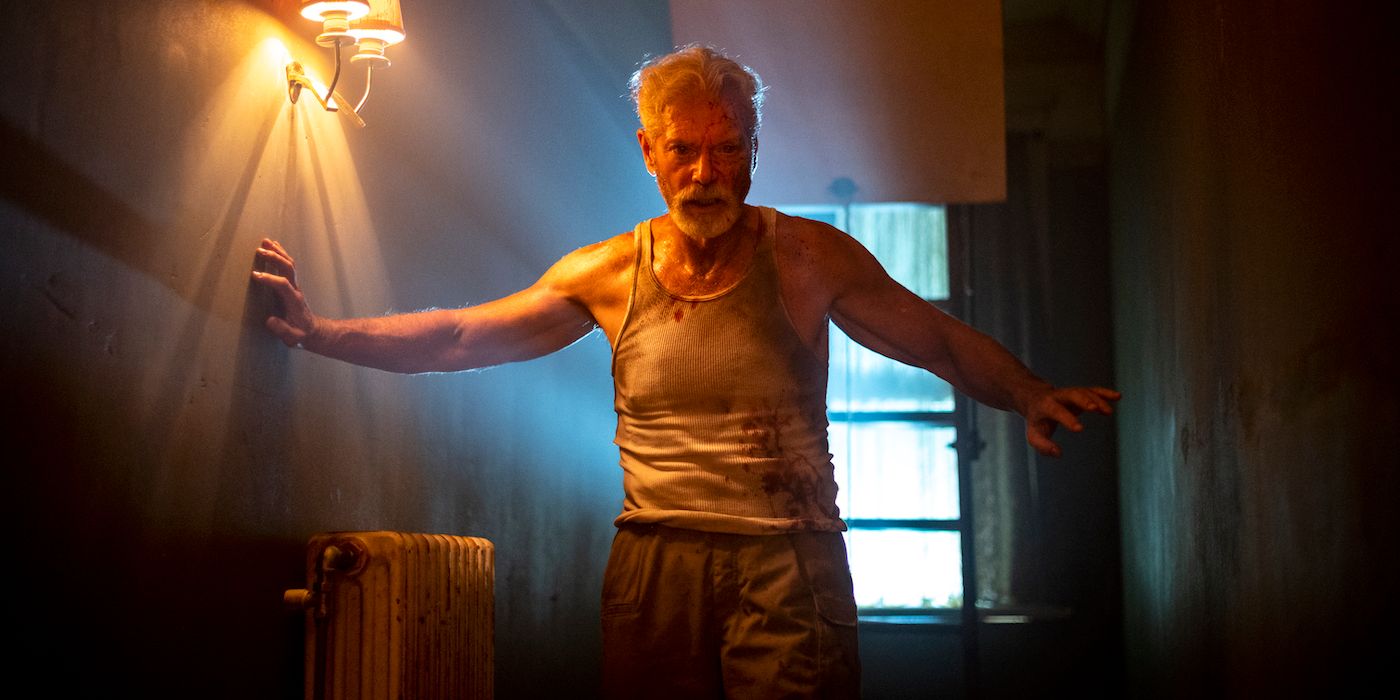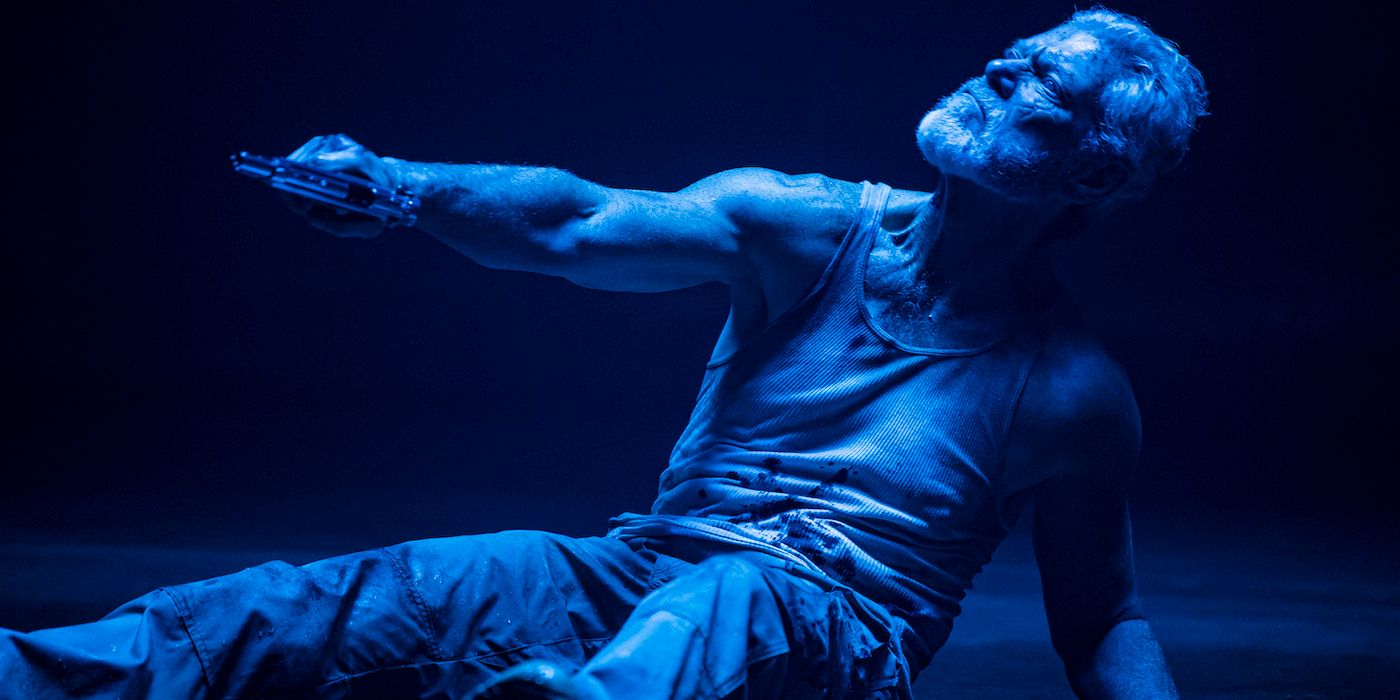By fusing an unexpectedly elegant screenplay with visually splendid craft — not to mention upping the ante on the gnarly, taboo genre thrills depicted — Don't Breathe 2 more than justifies its own existence. It creatively leapfrogs over the original 2016 film, serves as a ferocious calling card for debut director Rodo Sayagues (who co-writes with original director Fede Álvarez), and reminds adult moviegoers the power of seeing some fucked up shit in a movie theater with other fucked up adults.
Norman, the Blind Man (Stephen Lang, outstanding), is no longer our shadowy antagonist lurking among the margins of the frame, ready to defend himself from our protagonists invading his home. Instead, he's our central character, and maybe our "protagonist" — though I'd hesitate to call him "our hero," either from a moralistic or a narrative perspective. I'd argue that mantle belongs to the young Phoenix (Madelyn Grace), whom Norman adopted as his daughter after rescuing her from a house fire, and has kept her secure in an isolated, survivalist way of life despite her protestations for connections with a regular life. However, Phoenix can't stay alone for much longer, as a group of vicious criminals led by Raylan (Brendan Sexton III) has invaded their home, prompting a visceral, personal fight for survival that takes all parties involved past the point of any previously established labels or boundaries.
By placing Norman at the center of the horror-action, Don't Breathe 2 does a wonderful job of establishing urgency, stakes, and unpredictability. Heck, the idea that we are following the journey of a really, really vicious man is in itself an unpredictable choice, one that the film raises questions surrounding a capacity for change — or more importantly, a desire for change. This desire is manifested in Phoenix; yes, her given name is perhaps too neat (she's gotta rise from those literal house fire ashes!), but it represents an emotional thrust and deepness that gives the picture's screenplay an organic, character-fueled spine missing from the first. It also gives Sayagues plenty of opportunities to compose visuals that are clever enough to make genre fans perk up, but human enough to feel earned rather than assigned. From canny uses of mirrors that splinter characters from each other to the arrival of dogs as a visual signifier of empathy, Don't Breathe 2 is a particularly beautiful display of oft-ugly mayhem. Bravura long takes from Pedro Luque and powerful production design from David Warren are thus cherries atop an already tasty, surprisingly nutritious sundae, rather than the whole dessert.
Now, look: A sundae is still a sundae, no matter how you dress it up. Certain audiences may view Don't Breathe 2 as junk food and nothing more. The theater I saw it in had a tendency to erupt into unintentional laughter, whether nervously at a gore effect, disdainfully at a particularly overcooked line reading, or a combination of the two at some of the film's most aggressively sordid turns (remember the first film's turkey baster? This one tries to one-up it in a different direction, and largely succeeds, thanks to the overall personalization and emotional center of the film. I've said too much). At the risk of reviewing the audience rather than the film, I'll say that these bursts of reaction served as a testament to the power of the film; power that may surge a little (or a lot) past stability, but power that's still power. Don't Breathe 2 is, ultimately, a high-concept '90s domestic thriller with its taboo viscera keyed up to 11, and a prestigious, Spielbergian sense of visual and emotional craft adding some welcome sheen. It's the kind of movie that exists to provoke an audience; no matter what your guttural reaction is, whether you find it to be the next coming of Brian De Palma or Tommy Wiseau or somewhere in the middle, the reaction is proof enough that it's working. It's fuckin' fun to watch, is what I'm saying.
And to that central provocation, that potentially unswallowable idea that Norman, whom we watched murder and kidnap and torture and sexually assault with that turkey baster in the first film, is now our "hero," whom we "root for": The film — which largely does not make a claim about whether we are to find him endearing or changeable, instead using him as a catalyst character for Phoenix's journey — does climax with a kind of gesture toward a thesis statement on being a "monster" versus being a "human." But movies, especially hard-genre thrill rides looking to get any kind of rise out of their audience, do not always conflate the depiction of something with the endorsement of something. The central characters of Don't Breathe 2 may come to believe something. We don't have to agree with those beliefs; in many cases, the explicitly moral vantage point would be to disagree with them. We can still strap ourselves into the ride, allowing our beliefs to be poked but not broken, taking in the unexpectedly splendorous craft and emotion along the way.
Grade: B+
Don't Breathe 2 is currently playing in theaters.



